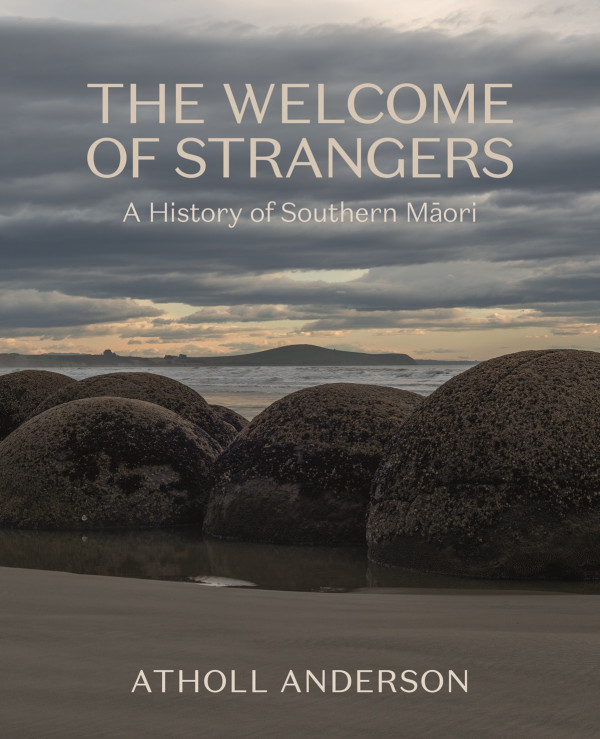Essential reading for the descendants of Tahu Pōtiki
Aug 11, 2025
According to Tā Tipene O'Regan The Welcome of Strangers is the best ethnohistory produced in New Zealand to date.
An extraordinary and authoritative achievement by distinguished archaeologist Atholl Anderson (Kāi Te Atawhiua, Kāi Tahu) with the assistance of the Ngāi Tahu Archive team, The Welcome of Strangers has now been republished, bringing together new research, rich illustrations, and detailed maps.
For Tā Tipene this foundational book has the important role of properly setting out the migrations to Te Waipounamu in a way that is accessible to new generations. Published by Bridget Williams Books and Te Rūnanga o Ngāi Tahu, the book offers readers vivid stories of southern Māori resilience and adaptability.
 Professor Anderson says one of his favourite components of the new hardback edition is the cover illustration of Te Kaihīnaki, the Moeraki boulders by Ngāi Tahu artist Neil Pardington. “The thing I love about it immediately is the cover… It looks to the East, where of course all Polynesian people come from.” And he says it has that double meaning because it looks across the Moeraki boulders, a prominent feature in the origin stories of southern Māori.
Professor Anderson says one of his favourite components of the new hardback edition is the cover illustration of Te Kaihīnaki, the Moeraki boulders by Ngāi Tahu artist Neil Pardington. “The thing I love about it immediately is the cover… It looks to the East, where of course all Polynesian people come from.” And he says it has that double meaning because it looks across the Moeraki boulders, a prominent feature in the origin stories of southern Māori.
“The stories have come down to us attached to whakapapa,” says Atholl Anderson of his extensive research. “I have used the whakapapa that was collected by Edward Shortland in 1843-1844, and he got the Ngāi Tahu story from two men; one was Tūhawaiki who was then paramount chief of Ngāi Tahu and the other was Matiāha Tiramōrehu, who by then was probably the most senior authority on southern Māori traditions. So, an impeccable account.”
Using the extensive mahinga kai archives, Atholl is able to bring to life the way that Ngāi Tahu lived seasonally from the land and sea, supported by long-distance trade, and a deep knowledge of their takiwā.
He says that since the book was first published in 1998, there has been a great deal more critical analysis of the oral traditions, documents, and research available. He gives as an example the research of Angela Wanhalla (Ngāi Tahu) into the presence and legacy of wāhine. “Many of the tribal histories are told to us by men and are largely about conflict… modern historians have been branching out into other fields and one of these is reviving the history of women.” He says his revision of the book has incorporated many of these new perspectives.
“The text is about 35% longer, a substantial revision,” he says. There are also twice as many illustrations, some of which have only recently come to the attention of historians.
Indeed, the detailed illustrations, maps, photographs, paintings, and portraits are among the many pleasures of this new edition, but so too are the references to very recent scholarly works, and the context and consideration given to historical evidence which has emerged since the original edition. As an example, this includes evidence relating to trouble between Murihiku Māori and sealers in the early 1800s.
Atholl agrees that it is a continuous source of pride to be involved in re-telling the narratives that shaped Ngāi Tahu, especially when there are those that continue to serve up pseudo-history for their own purposes. “It is a duty for historians and people with access to genuine authoritative information to do this,” he says. “All of us who do it, we hope it makes a difference.”
Copies of The Welcome of Strangers are available for purchase online at the Te Rūnanga o Ngāi Tahu shop.